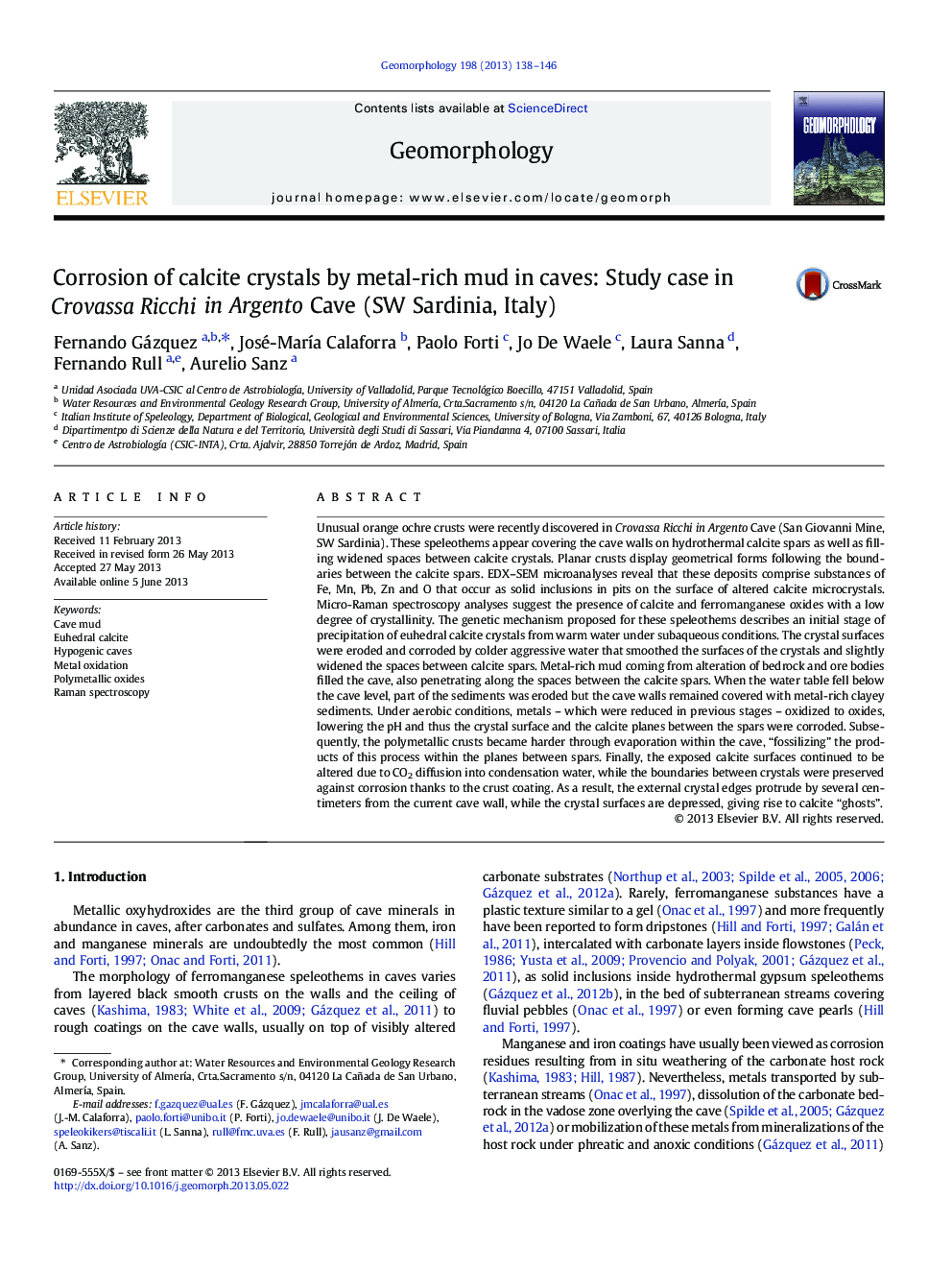| کد مقاله | کد نشریه | سال انتشار | مقاله انگلیسی | نسخه تمام متن |
|---|---|---|---|---|
| 4684750 | 1635451 | 2013 | 9 صفحه PDF | دانلود رایگان |

• The origin of orange ochre crusts in a hypogenic cave has been studied.
• Fe–Mn oxide crusts display geometrical forms resembling a “mosaic”.
• Calcite spars precipitated under phreatic conditions from thermal water.
• Calcite crystals were covered by metal-rich mud in anoxic conditions.
• Low pH caused by oxidation of metals in oxic conditions led to calcite corrosion.
Unusual orange ochre crusts were recently discovered in Crovassa Ricchi in Argento Cave (San Giovanni Mine, SW Sardinia). These speleothems appear covering the cave walls on hydrothermal calcite spars as well as filling widened spaces between calcite crystals. Planar crusts display geometrical forms following the boundaries between the calcite spars. EDX–SEM microanalyses reveal that these deposits comprise substances of Fe, Mn, Pb, Zn and O that occur as solid inclusions in pits on the surface of altered calcite microcrystals. Micro-Raman spectroscopy analyses suggest the presence of calcite and ferromanganese oxides with a low degree of crystallinity. The genetic mechanism proposed for these speleothems describes an initial stage of precipitation of euhedral calcite crystals from warm water under subaqueous conditions. The crystal surfaces were eroded and corroded by colder aggressive water that smoothed the surfaces of the crystals and slightly widened the spaces between calcite spars. Metal-rich mud coming from alteration of bedrock and ore bodies filled the cave, also penetrating along the spaces between the calcite spars. When the water table fell below the cave level, part of the sediments was eroded but the cave walls remained covered with metal-rich clayey sediments. Under aerobic conditions, metals – which were reduced in previous stages – oxidized to oxides, lowering the pH and thus the crystal surface and the calcite planes between the spars were corroded. Subsequently, the polymetallic crusts became harder through evaporation within the cave, “fossilizing” the products of this process within the planes between spars. Finally, the exposed calcite surfaces continued to be altered due to CO2 diffusion into condensation water, while the boundaries between crystals were preserved against corrosion thanks to the crust coating. As a result, the external crystal edges protrude by several centimeters from the current cave wall, while the crystal surfaces are depressed, giving rise to calcite “ghosts”.
Journal: Geomorphology - Volume 198, 15 September 2013, Pages 138–146